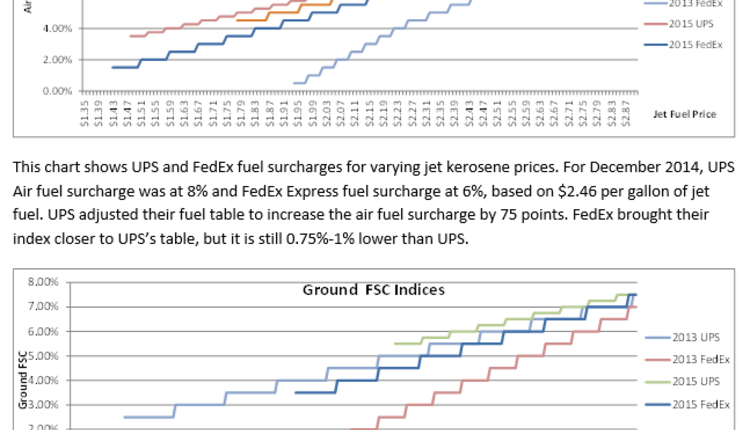In a press release dated June 17, 2014, UPS announced their decision to apply Dimensional weighing to all Ground packages effective December 29, 2014. Currently dimensional weighing applies to all Air packages, and Ground packages over 3 cubic feet. With this change all packages will be rated based on the greater of actual weight or the DIM weight (length x width x height divided by the DIM divisor ; Service Guide divisor is currently 166 for Domestic packages). FedEx announced the same change in May, and it was expected that UPS follow suit, so this announcement comes as no surprise to most shippers and consultants.
In the press release UPS claimed that this change will promote packaging efficiency, and reduce packaging material and fuel consumption, since it will push shippers to reduce package sizes. Although this is true to some extent, the fact remains that this change will increase the transportation cost of most low-weight ground shippers dramatically. A 3 lb. package in a 1 cubic foot box will be billed at 11 lbs. in 2015. Depending on the contractual incentives and minimum package charges, the dimensional weight change can result in cost increases of up to 60%. At enVista, we believe this change will result in the highest effective YOY cost increase in the past fifteen years or more for most shippers. This change will go into effect with the 2015 GRI (General Rate Increase) which will only exacerbate the cost increase.
Shippers should take proactive steps to mitigate this cost increase, one of which is what UPS is advising: reducing the package dimensions and increasing the density of the shipments as much as possible. Also shippers can reach out to their carriers to negotiate grandfathering of the 3 cubic feet rule, higher dimensional factors, and higher incentives on Ground services. Since both UPS and FedEx are applying identical DIM logic, there will be little leverage for the shippers. However the regional carriers and non-impacted services can be considered as well.
In the press release UPS claimed that this change will promote packaging efficiency, and reduce packaging material and fuel consumption, since it will push shippers to reduce package sizes. Although this is true to some extent, the fact remains that this change will increase the transportation cost of most low-weight ground shippers dramatically. A 3 lb. package in a 1 cubic foot box will be billed at 11 lbs. in 2015. Depending on the contractual incentives and minimum package charges, the dimensional weight change can result in cost increases of up to 60%. At enVista, we believe this change will result in the highest effective YOY cost increase in the past fifteen years or more for most shippers. This change will go into effect with the 2015 GRI (General Rate Increase) which will only exacerbate the cost increase.
Shippers should take proactive steps to mitigate this cost increase, one of which is what UPS is advising: reducing the package dimensions and increasing the density of the shipments as much as possible. Also shippers can reach out to their carriers to negotiate grandfathering of the 3 cubic feet rule, higher dimensional factors, and higher incentives on Ground services. Since both UPS and FedEx are applying identical DIM logic, there will be little leverage for the shippers. However the regional carriers and non-impacted services can be considered as well.







